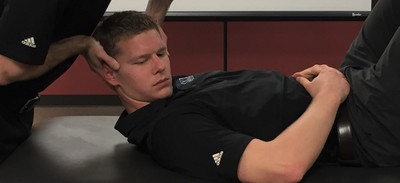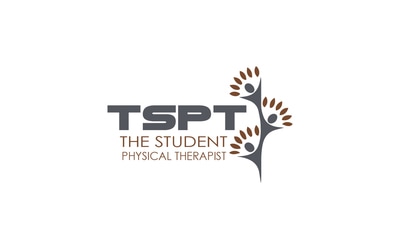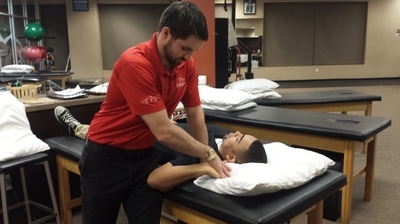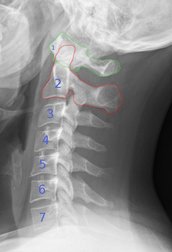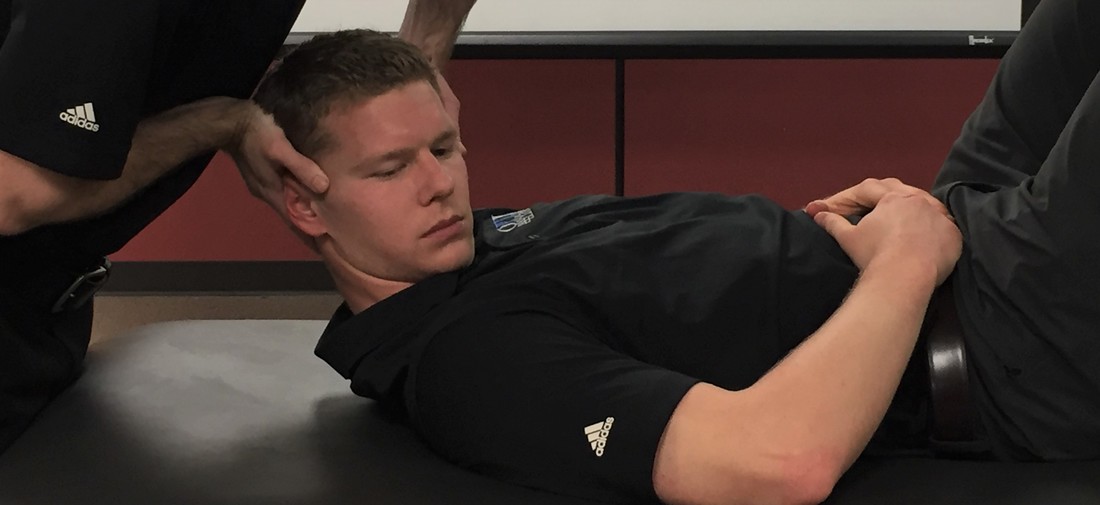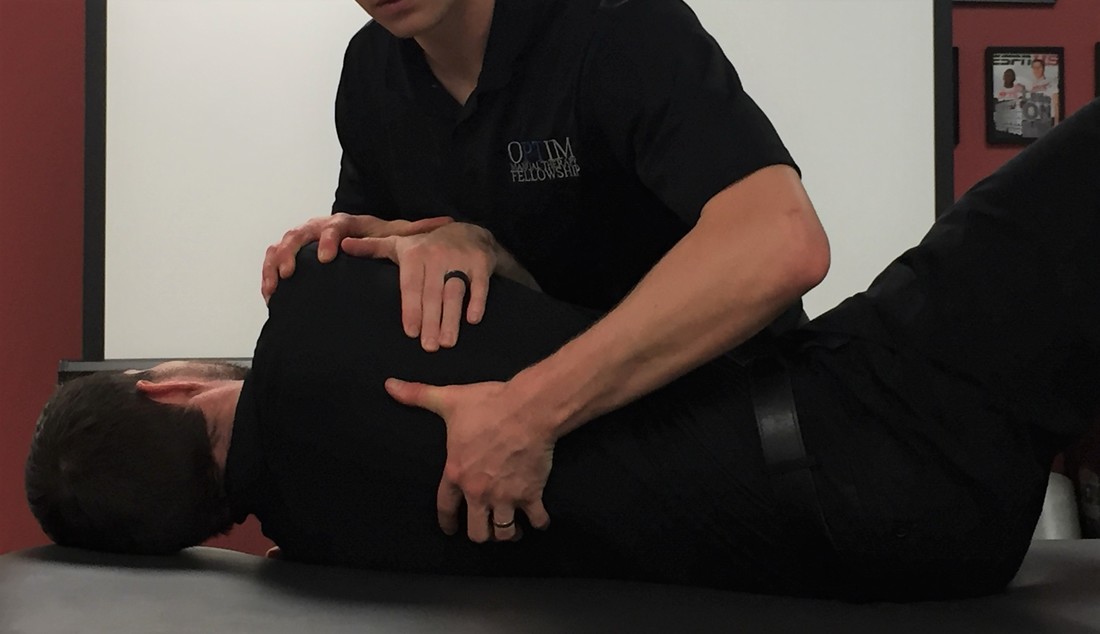- Home
- About Us
- TSPT Academy
- Online Courses
-
Resources
- Newsletter
- Business Minded Sports Physio Podcast
- Day in the Life of a Sports PT
- Residency Corner
-
Special Tests
>
-
Cervical Spine
>
- Alar Ligament Test
- Bakody's Sign
- Cervical Distraction Test
- Cervical Rotation Lateral Flexion Test
- Craniocervical Flexion Test (CCFT)
- Deep Neck Flexor Endurance Test
- Posterior-Anterior Segmental Mobility
- Segmental Mobility
- Sharp-Purser Test
- Spurling's Maneuver
- Transverse Ligament Test
- ULNT - Median
- ULNT - Radial
- ULNT - Ulnar
- Vertebral Artery Test
- Thoracic Spine >
-
Lumbar Spine/Sacroiliac Joint
>
- Active Sit-Up Test
- Alternate Gillet Test
- Crossed Straight Leg Raise Test
- Extensor Endurance Test
- FABER Test
- Fortin's Sign
- Gaenslen Test
- Gillet Test
- Gower's Sign
- Lumbar Quadrant Test
- POSH Test
- Posteroanterior Mobility
- Prone Knee Bend Test
- Prone Instability Test
- Resisted Abduction Test
- Sacral Clearing Test
- Seated Forward Flexion Test
- SIJ Compression/Distraction Test
- Slump Test
- Sphinx Test
- Spine Rotators & Multifidus Test
- Squish Test
- Standing Forward Flexion Test
- Straight Leg Raise Test
- Supine to Long Sit Test
-
Shoulder
>
- Active Compression Test
- Anterior Apprehension
- Biceps Load Test II
- Drop Arm Sign
- External Rotation Lag Sign
- Hawkins-Kennedy Impingement Sign
- Horizontal Adduction Test
- Internal Rotation Lag Sign
- Jobe Test
- Ludington's Test
- Neer Test
- Painful Arc Sign
- Pronated Load Test
- Resisted Supination External Rotation Test
- Speed's Test
- Posterior Apprehension
- Sulcus Sign
- Thoracic Outlet Tests >
- Yergason's Test
- Elbow >
- Wrist/Hand >
- Hip >
- Knee >
- Foot/Ankle >
-
Cervical Spine
>
- I want Financial Freedom
- I want Professional Growth
- I want Clinical Mastery
Cervical Spine
Range of Motion
Manual Muscle Tests
Coming soon...
Special Tests
Cervical Research
Canadian C-Spine Rules:
1. 65+ or dangerous mechanism* or paresthesias in extremities (if yes, radiographs indicated)
2. Any low risk factor that allows safe assessment of AROM (if no, radiographs indicated)
3. Active 45 deg of rotation bilaterally in neck (if no, radiographs indicated)
*Dangerous Mechanism: fall from elevation > 3ft, axial load to head, MVC high speed/rollover/ejection, motorized recreational vehicles, bicycle collision
**Low Risk Factor: simple rearend MVC (EXCLUDES: pushed into oncoming traffic/hit by bus/rollover/hit by high speed vehicle), sitting position in ED, ambulatory at any time, delayed onset of neck pain, absence of midline c-spine tenderness
Cervical Manipulation for Neck Pain (Puentedura et al, 2012):
-Symptom duration of < 38 days
-Positive expectation that manipulation will help
-Side to side difference in cervical rotation ROM of 10 deg or greater
-PAin with PA spring testing of the middle cervical spine
3 positive: Sn .81, Sp .94, +LR 13.5
4 positive: Sn .5, Sp 1.0, +LR infinite
Cervical Myelopathy (Cook et al, 2010):
-Ataxic gait
(+) Hoffman's Test
(+) Babinski Test
(+) Inverted Supinator Sign
-Age > 45 years
1 positive: Sn .94, Sp .31, +LR 1.4
2 positive: Sn .39, Sp .88, +LR 3.3
3 positive: Sn .19, Sp .99, +LR 30.9
4 positive: Sn .09, Sp 1.0, +LR infinite
Cluster for Cervical Radiculopathy Diagnosis (Wainner et al, 2003):
-Cervical rotation <60 degrees to the affected side
+ Distraction Test
+Spurling’s Maneuver
+ ULNT-Median
3 positive: +LR: 6.1
4 positive: +LR: 30.3
Cluster for Patients with Neck Pain that will Benefit from T-Spine Manipulation (Cleland et al, 2007):
-Symptoms <30 days
-No symptoms distal to the shoulder
-Looking up does not aggravate symptoms
-FABQ Physical Activity Score <12
-Diminished upper thoracic spine kyphosis
-Cervical extension ROM <30 degrees
3 positive: +LR: 5.5
4 positive: +LR: 12
5-6 positive: +LR: >12
Mechanical Traction for Neck Pain (Raney et al, 2009):
-Patient reported peripheralization with lower cervical spine (C4-7) mobility testing
(+) Bakody's Sign
-Age 55+
(+) ULNT A
(+) Cervical Distraction Test
3 positive: Sn .63, Sp .87, +LR 4.81
4 positive: Sn .3, Sp 1.0, +LR 23.1
Note: tests should only be performed by a properly trained health care practitioner.
1. 65+ or dangerous mechanism* or paresthesias in extremities (if yes, radiographs indicated)
2. Any low risk factor that allows safe assessment of AROM (if no, radiographs indicated)
3. Active 45 deg of rotation bilaterally in neck (if no, radiographs indicated)
*Dangerous Mechanism: fall from elevation > 3ft, axial load to head, MVC high speed/rollover/ejection, motorized recreational vehicles, bicycle collision
**Low Risk Factor: simple rearend MVC (EXCLUDES: pushed into oncoming traffic/hit by bus/rollover/hit by high speed vehicle), sitting position in ED, ambulatory at any time, delayed onset of neck pain, absence of midline c-spine tenderness
Cervical Manipulation for Neck Pain (Puentedura et al, 2012):
-Symptom duration of < 38 days
-Positive expectation that manipulation will help
-Side to side difference in cervical rotation ROM of 10 deg or greater
-PAin with PA spring testing of the middle cervical spine
3 positive: Sn .81, Sp .94, +LR 13.5
4 positive: Sn .5, Sp 1.0, +LR infinite
Cervical Myelopathy (Cook et al, 2010):
-Ataxic gait
(+) Hoffman's Test
(+) Babinski Test
(+) Inverted Supinator Sign
-Age > 45 years
1 positive: Sn .94, Sp .31, +LR 1.4
2 positive: Sn .39, Sp .88, +LR 3.3
3 positive: Sn .19, Sp .99, +LR 30.9
4 positive: Sn .09, Sp 1.0, +LR infinite
Cluster for Cervical Radiculopathy Diagnosis (Wainner et al, 2003):
-Cervical rotation <60 degrees to the affected side
+ Distraction Test
+Spurling’s Maneuver
+ ULNT-Median
3 positive: +LR: 6.1
4 positive: +LR: 30.3
Cluster for Patients with Neck Pain that will Benefit from T-Spine Manipulation (Cleland et al, 2007):
-Symptoms <30 days
-No symptoms distal to the shoulder
-Looking up does not aggravate symptoms
-FABQ Physical Activity Score <12
-Diminished upper thoracic spine kyphosis
-Cervical extension ROM <30 degrees
3 positive: +LR: 5.5
4 positive: +LR: 12
5-6 positive: +LR: >12
Mechanical Traction for Neck Pain (Raney et al, 2009):
-Patient reported peripheralization with lower cervical spine (C4-7) mobility testing
(+) Bakody's Sign
-Age 55+
(+) ULNT A
(+) Cervical Distraction Test
3 positive: Sn .63, Sp .87, +LR 4.81
4 positive: Sn .3, Sp 1.0, +LR 23.1
Note: tests should only be performed by a properly trained health care practitioner.
References:
Cleland JA, Childs JD, Fritz JM, Whitman JM, Eberhart SL. "Development of a clinical prediction rule for guiding treatment of a subgroup of patients with neck pain: use of thoracic spine manipulation, exercise, and patient education." Phys Ther. 2007 Jan. Web. 08/18/2012.
Cleland JA, Flynn TW, Whitman JM. User's Guide to the Musculoskeletal Examination Fundamentals for the Evidence-Based Clinician: Evidence in Motion; 2008.
Cook CE, et al. Clustered clinical findings for diagnosis of cervical spine myelopathy. J Man Manip Ther. 2010; 18(4):175-180.
Puentedura EJ, et al. Development of a clinical prediction rule to identify patients with neck pain, likely to benefit from thrust joint manipulation to the cervical spine. J Orthop Sports Phys Ther. 2012; 42(7): 577-92.
Raney NH, et al. Development of a clinical prediction rule to identify patients with neck pain likely to benefit from cervical traction and exercise. Eur Spine J. 2009; 18(3):382-91.
Steill IG et al. The Canadian C-Spine Rule versus the NEXUS Low-Risk Criteria in patients with trauma. N Engl J Med 2003; 349:2510-8.
Wainner RS, Fritz JM, Irrgang JJ, Boninger ML, Delitto A, Allison S. "Reliability and diagnostic accuracy of the clinical examination and patient self-report measures for cervical radiculopathy." Spine (Phila Pa 1976) 2003 Jan 1. Web. 08/18/2012.
Cleland JA, Childs JD, Fritz JM, Whitman JM, Eberhart SL. "Development of a clinical prediction rule for guiding treatment of a subgroup of patients with neck pain: use of thoracic spine manipulation, exercise, and patient education." Phys Ther. 2007 Jan. Web. 08/18/2012.
Cleland JA, Flynn TW, Whitman JM. User's Guide to the Musculoskeletal Examination Fundamentals for the Evidence-Based Clinician: Evidence in Motion; 2008.
Cook CE, et al. Clustered clinical findings for diagnosis of cervical spine myelopathy. J Man Manip Ther. 2010; 18(4):175-180.
Puentedura EJ, et al. Development of a clinical prediction rule to identify patients with neck pain, likely to benefit from thrust joint manipulation to the cervical spine. J Orthop Sports Phys Ther. 2012; 42(7): 577-92.
Raney NH, et al. Development of a clinical prediction rule to identify patients with neck pain likely to benefit from cervical traction and exercise. Eur Spine J. 2009; 18(3):382-91.
Steill IG et al. The Canadian C-Spine Rule versus the NEXUS Low-Risk Criteria in patients with trauma. N Engl J Med 2003; 349:2510-8.
Wainner RS, Fritz JM, Irrgang JJ, Boninger ML, Delitto A, Allison S. "Reliability and diagnostic accuracy of the clinical examination and patient self-report measures for cervical radiculopathy." Spine (Phila Pa 1976) 2003 Jan 1. Web. 08/18/2012.
Copyright © The Student Physical Therapist LLC 2023

